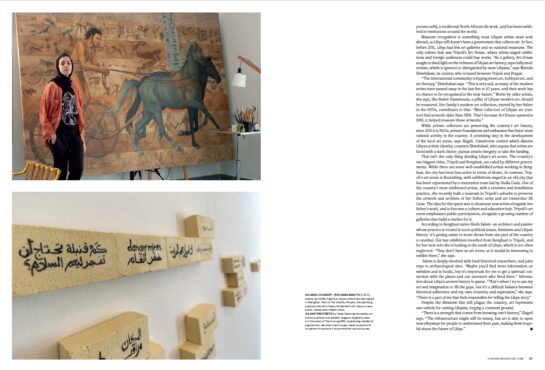
My piece on the light art festival Noor Riyadh has just been published on Al-Monitor.
“Standing in the middle of the King Abdullah Financial District (KAFD) in Riyadh, a swarm of drones creates delicate constellations on the horizon. A virtuoso is playing the piano on a stage, complementing the 3,000-drone performance conceived by Studio Drift — an artist duo formed by Dutch artists Lonneke Gordijn and Ralph Nauta — called ‘Desert Swarm’.”
Here is the link to the article





![Team photo from left to right:
Amélie Kalafat (Artistic assistant)
Clara Alabed Alnaef, (Partnership & communication),Joanna Chevalier (Artistic director), Laure d’Hauteville (Founder & fair director), Tara El Khoury Mikhaël (Gallery relations), Léonie Racy (Scenographer), Camelia Esmaili, (Special Project Advisor) [@Irenederosen]](https://i0.wp.com/www.middleeastmonitor.com/wp-content/uploads/2023/09/2%C2%B0-equipe-menart-fair-2023-scaled.jpg?fit=1200%2C798&ssl=1)









